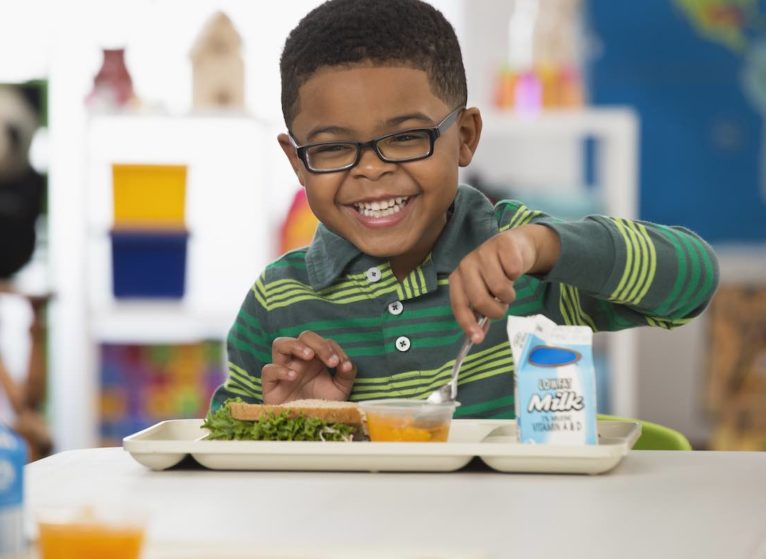Even if you stress the importance of balanced and consistent healthy eating, it can be hard to be sure kids follow your lead once they head to school. So what can you do as a parent to help them make good food choices?
Let Kids Have a Say
Like adults, kids want to be in control of what they eat. If your child eats school lunches, look over the menu together and discuss what they do or don’t like. Talk about choosing a variety of food. Even plan to pack lunch on days they don’t like what’s offered so they still eat a well-rounded meal. For packed lunches, give kids a few healthy options, and let them decide what makes the final cut.
Pack Lunch Carefully
Sending your child to school with lunch from home can give you more control over what your child eats, but pay attention to what you pack. One study found packed lunches had less nutrient dense goods, providing less protein, fiber, and calcium than school lunches. The takeaway: avoid packing too many snacks and provide water or milk as a beverage.
“Packing a variety of foods within each food group — protein, fruits, veggies, dairy, grains — can help ensure your child is getting a balance of nutrients. These foods can fuel their brain for the school day," says pediatric nutritionist Eva Manthe, RDN.
She adds, "Generally, aim to pack an entrée, such as a sandwich, or leftovers from dinner, and include a few snacks or side items."
Switch Up School Snacks
Deciding what to pack for snacks can be hard, as there are many different “snack” foods available. Try to pack snacks that have some staying power to keep your child satisfied throughout the day.
Include sources of each macronutrient (protein, fat and carbohydrates), such as:
- Cheese with fruit
- Mixed nuts with dry cereal
- Apple and peanut butter
- Hummus and carrots
- Turkey rolled up in whole wheat tortillas
“Sending a variety of snacks during the week can help keep your child from getting bored of eating the same things day to day,” says Manthe. "It’s also important to send foods your child enjoys, so they can learn how to eat a variety of foods without getting too excited about any foods in particular.”
Food for Families in Need
We've opened a food pantry for kids and families who are struggling with food insecurity.
Model Healthy Eating at Home
If your child is used to making varied and balanced food choices at home, they’re more likely to do the same when they’re on their own. Don’t lecture kids on the importance of eating healthy. Instead, try these:
- Prioritize family meals when you can
- Involve them in grocery shopping and meal preparations (in an age-appropriate manner)
- Encourage trying new foods so it becomes second nature to them
“Parents and caregivers are the best models for behaviors — eating behaviors included — and children are always watching even if they don’t seem to be,” says Manthe. “Modeling the eating patterns you wish to see in your child is an excellent way to encourage similar behaviors in your children.”
One word of caution: be careful not to associate eating certain foods with negativity, shame or guilt, says Manthe. “Aim to foster mindfulness, balance and variety to support a positive relationship with food,” she says. “But take care not to categorize foods as ‘good’ and ‘bad’ or ‘healthy and unhealthy’. Pizza and ice-cream parties should still be a fun and enjoyed as part of life.”
This post was originally published in 2018 and updated in August 2021.


